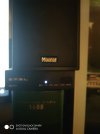Es apsvēru iespēju izveidot sava veida "pamācību" visiem XMOS draiveriem ierīcēs, kurām ir nogrieznis — latentums starp skaņas sākumu un dac "reaģēšanu" un šīs skaņas atskaņošanu...
Tātad šeit tas ir:
XMOS draiveri izmanto vadības paneli, kas atšķiras no šī:
View attachment 147854
Parasti izvēlnes "Opcijas", kas ir mūsu vajadzībām interesantākā daļa, nav. Lūdzu, ņemiet vērā, ka *daži* ražotāji joprojām izvēlas pilnībā bloķēt šo izvēlni neatkarīgi no tā, ko mēs gatavojamies darīt, un jūs joprojām nevarēsit to parādīt un izmantot.
Tātad, vispirms mums ir jāatrod, kur atrodas šis vadības panelis. Lai uzzinātu, kur atrodas jūsu, pārbaudiet procesu uzdevumu pārvaldniekā:
View attachment 147862
SSL gadījumā tas ir šeit (citiem tas būs direktorijā, kurā tika instalēts USB draiveris):
View attachment 147856
Lai tas darbotos, lūdzu, no teknes ikonas izejiet no XMOS draivera vadības paneļa un pārliecinieties, vai process xxxxAudioCpl.exe nedarbojas.
Pēc tam atveriet atzīmēto XML failu ar savu iecienītāko teksta redaktoru, un mēs tiekam sagaidīti ar kaut ko līdzīgu:
View attachment 147857
Ja šī sadaļa jūsu xml failā nav, jums tā būs jāpievieno manuāli. Ērtības labad šeit ir xml paraugs:
[KODS=xml]
<!-- ++++++++++++++++++++++++++++++++++++++++++++ ++++++++++++++++++++++++ -->
<Lapas opcijas>
<!-- Šīs lapas atbalstītās vērtības: Slēpts (noklusējums), Redzams -->
<Visibility>Slēpts</Visibility>
</PageOptions>
[/CODE]
Ja šī XML sadaļa ir vietā vai tās nav, jūsu CPL izskatīsies šādi (bez opcijām):
View attachment 147858
Mums ir jāmaina
no Slēpts uz Redzams, lai tas tā būtu, un saglabājiet failu:
View attachment 147859
Pēc xml faila saglabāšanas, lūdzu, palaidiet vadības paneli no exe, kas atrodas virs xml (skatiet
View attachment 147856 ). Ja viss ir noticis pareizi un jūsu DAC ražotājs nav bloķējis izvēlnes Opcijas izmantošanu, tagad redzēsit:
View attachment 147860
Noklusējuma iestatījums ir “ieslēgts, kad nepieciešams”, taču, ja nevēlaties, lai dziesmas/video palaišanas laiks būtu latents — dac atskaņo minēto skaņu, tas jāiestata uz “Vienmēr ieslēgts”.
Tā nekādā gadījumā nav ļaunprātība DAC ražotāju vārdā (izņemot tos, kas to slēpj, neskatoties uz iepriekšminētajiem centieniem), bet gan pilnīga un absolūta nekompetence vai vismaz nezināšana.
Tas arī viss! Tagad jums ir DAC, kas nepārtrauks dziesmu sākšanu, ja vien jūs, iespējams, neatjaunināsit draiveri un neatgriezīsit izmaiņas
 @amirm
@amirm, ja nav citas tēmas, kas apspriestu šo jautājumu, lūdzu, piespraust šo, jo esmu redzējis diezgan daudz sūdzību par šo problēmu.

